
Nereocystis luetkeana
Bull Kelp, Bullwhip Kelp, Ribbon Kelp
Observations conducted: 9 July 2021, start time 09:40 PDT
Harling Point, Juan de Fuca Strait, B.C., Canada
Tide: 1.0 foot tide 10:02 PDT (measured at Oak Bay Tidal Station)
Conditions: Clear, no precipitation, winds West 0 – 5 km/hr, sea smooth, low irregular SW swell, 15˚C, relative humidity 86%.
Phase of Moon: New Moon (approx. 8 hours prior to this phase at time of interaction); (Previous Phase, Third quarter, 1 July 2021 at 2:10pm PDT: Next Phase, New Moon, 9 July 2021 at 6:16pm PDT.)
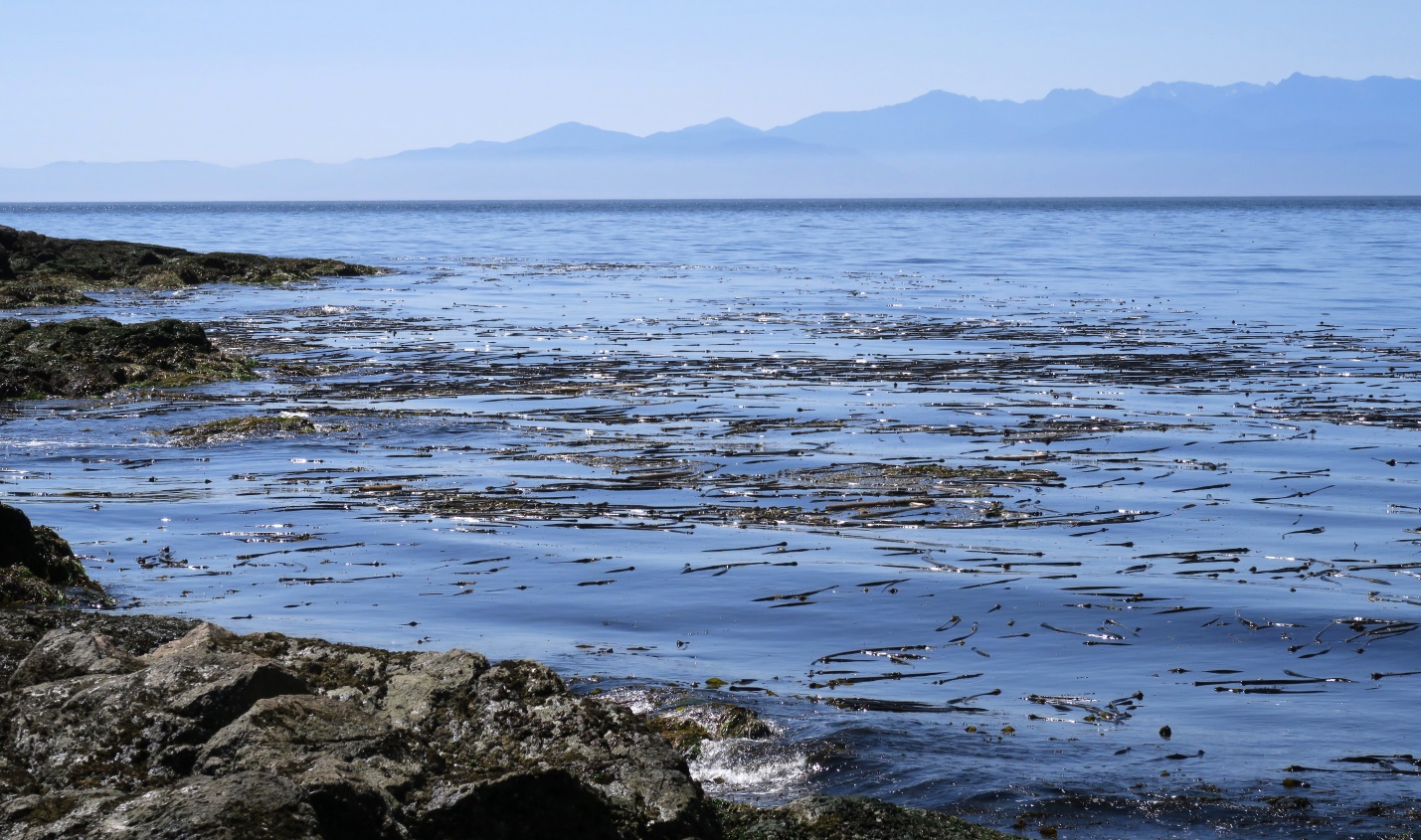
Figure 1: Nereocystis luetkeana – a prominent offshore seaweed; extensive Bull Kelp beds are pictured here near the peak of their annual growing season. Harling Point, Juan de Fuca Strait, B.C. Canada. July 11, 2021. Photo ID 27306 ©Seaweedwhisperings.com
Person 1:
The recent heat wave has severely impacted this kelp. Many individuals have bleached pneumatocysts and adjacent stipes. Likely will perish soon. But who knows… maybe they will sprout again.
I’m taking a close look at the one individual I’ve found whose holdfast is above water at this quite low tide today.
The holdfast has many branched haptera. There are a few forked/club-shaped projections on the holdfast.
This specimen is relatively small.
Thallus 4.5 meters long; holdfast 6 cm across; stipe approx. 1.5 cm in diameter at holdfast tapering upwards to approximately 6 cm at the base of the pneumatocyst.
Stem and pneumatocyst hollow.
Pneumatocyst is about 8 cm across.
Numerous flat blades emanate from the pneumatocyst.
Blades are up to 5 cm across and 2 meters long.
One common name is ‘Bullwhip’ Kelp; certainly fits its form. Oddly I don’t sense any connotations of this shape. Use of bullwhips is apparently not uncommon in sexual domination play. The kelp energy comes across as much more gentle – is it hiding fantasies?
Bull Kelp is definitely a dominant canopy alga. Once established it has few if any competitors.
Blades tear easily and have a delightful lettuce flavor.
Looking out to sea I view a couple thousand floating Bull Kelps. They grow in twisted multi-plant clusters, mainly oriented in a single direction. There are spaces between clumps, creating a sense of channels between.
I wonder if they frequently change friend groups…, they seem to like to have close group relationships, they’re not loners.
Slippery snake.
Relatively content as long as they are not challenged.
I moved to a higher vantage point.
I could see 200 meters to the east and 1 kilometer to the west. There were “islands” of Bull Kelp across the seascape.
Do they prefer to isolate in families or clans?
Overlooking a severely sun damaged kelp bed I noticed that some individuals appeared to be in good condition. Got the sense of perseverance, but with no particular idea of how to manifest that.
Bull Kelp is one of the fastest growing seaweeds – just goes…
Heads upwards [from the ocean bottom] to light.
When it arrives there, does it get bored… nothing to do…?
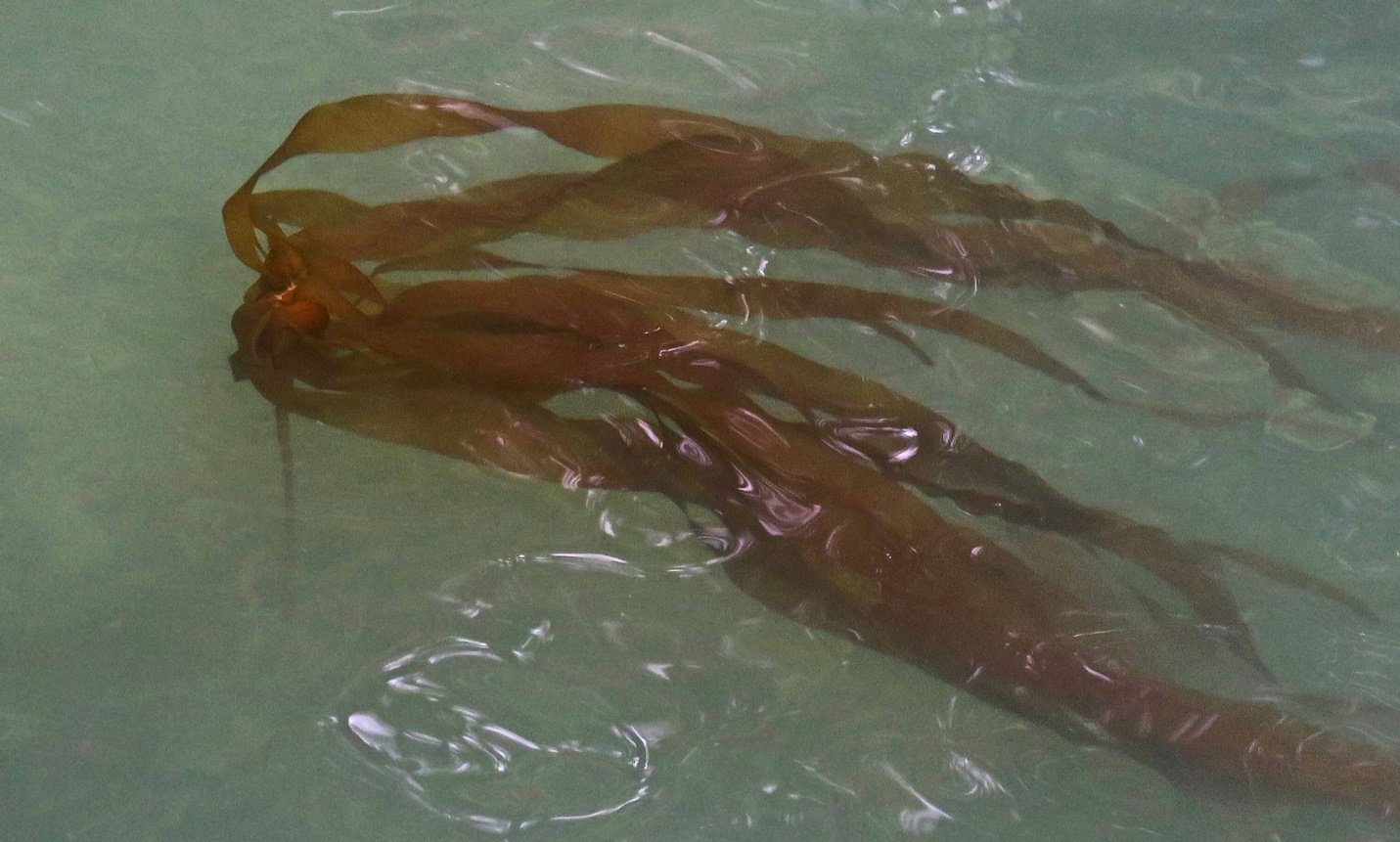
Figure 2: A single Nereocystis luetkeana kelp growing just offshore; note the stipe descending straight downward from the pneumatocyst (float) where all the long blades originate. Snuggery Cove, Juan de Fuca Strait, B.C., Canada. June 10, 2020. Photo ID 27307 ©Seaweedwhisperings.com
Person 2:
Many, many ‘colonies’ of you are growing, floating just offshore.
Brown tubes, large and long.
Randomly aligned groupings form as the currents and waves dictate.
I think some of you entangle. This doesn’t bother you too much but each tube wants to be close to the water; tangled ones can be lifted out of water which feels very much not ideal.
Holdfast of one individual is anchored very strongly to a knob on the bedrock here. The holdfast looks to have been there a long while. Some haptera are riddled with bite marks (herbivore?) and some are shiny and new looking.
Your single stipe arises from the newest haptera. It is a cylindrical tube that is totally smooth and unbranched; it is almost 5 meters long. The tube gradually widens like a very, very long and slender funnel. At the end is an almost spherical bladder (pneumatocyst).
From the bladder, at the furthest point from the holdfast, two clusters of blades emerge in linear formation – one each side of what would be the exact centre of the bulbous pneumatocyst.
Your blades have a long curving very slight sickle shape. They are a lovely fresh olive green color. Very smooth.
I discovered that they tear easily.
Blades are very tasty like sort of very mild cucumber or lettuce taste.
This one Bull Kelp is beached at low tide.
Somehow it got growing from rock that was not well anchored and it was lifted inshore with the previous ocean swells. It is waiting; it has no choice but to wait for the tide to return.
Here in the waiting mode this kelp is not happy for its new circumstance of location. However, it is also not self-flagellating for its predicament.
So, the stranded Bull Kelp must wait.
Hope for another chance.
Try another time.
Hope for a more satisfying result.
Holdfast and stipe (especially) are obvious, straightforward to behold and understand – simple, uncomplicated, and effective.
Enthusiastic is the word for the blades – they grow in profusion, dipping beneath the water’s surface, but also held close to the surface by the float.
The blades are numerous one this young specimen; there are easily 12 – 15 in each of the twin groupings on the pneumatocyst. And they are long, easily 2 or 2.5 or 3 meters.
They waft at the end of the pneumatocyst like streamers of very broad satiny ribbon.
The blades don’t branch, don’t have any frills or ribs or adornments; they simply grow, extending out and away.
Could they grow too long? Possibly…, maybe some do and then they dip a bit low beneath the surface and don’t access enough light.
So is this where they try, learn and then try again. Ah, this is the second time I’ve noted this pattern/behavior for this kelp.
Simple, steady, onward growth. Does anything stop you much?
I sense no specific goal or component of any actual planning to you, but there is a strong drive, a pure enthusiasm to grow, grow and grow some more.
The tangles you can get into don’t serve you. I think they could ultimately harm you.
But you have no capacity to untangle yourself (from your neighboring Bull Kelps and especially if tangled with other macro algae such as Macrocystis pyrifera or Egregia menziesii).
Untangling - that you have not learned yet. Possibly there is difficulty in resolving conflicts, arguments, disagreements, or even in undoing associations once they have been formed.
Oh dear I think to myself; I’ve moved to another area on the shoreline and here I see many of the Bull Kelp been ‘sun-burned’. Recent super-hot weather, a record breaking heat dome, that lasted for several days in a row, along with no wind and little nighttime drop of temperature have combined to harm you (this included record daytime highs of 38-40˚C when the normal highs are only 21˚C at this season).
The pneumatocysts of many of you are pale yellow / off white and this color, bleached of life, also extends back along the top sides of your stipe in many of you.
Where you were ‘sun burned’ it looks as if your float lost ability to hold onto and nurture your blades. All the blades are gone on at least the “top” half of the blade pair (floating highest off of the water). In some individuals all the blades are gone.
Is that the end?
You look wounded, very unwell, the coloration, off white is all wrong.
Will you now just float on the waves, your holdfast, stipe and pneumatocyst no longer able to serve their purpose? The blades are gone, you can’t produce your own energy any more.
I, a human, feel loss here. I am happy to discover that with the Bull Kelps themselves, though, the feeling is much lighter. It is like, “OK, that didn’t work – what next?”
If any “hurt” was registered it was short-lived and not taken ‘personally’ at all. It’s like a rather carefree state, if you don’t have specific ambitions then few cares and concerns impact you.
Can you survive as a species if too many of these ‘blows’ to your wellbeing occur? Thus far, it certainly looks as if you have, but heat seems to be a notable vulnerability to you.
In these near shoreline waters Bull Kelp is a notable presence. Its enthusiastic and abundant growth dominates the water surface. I would NOT want to try to swim through it, nor paddle or motor a boat through it either. It feels as if I would almost certainly become entangled and any hope for finding a course, a direction out would be slim. If I need something to keep me afloat, as long as I could survive the water temperatures, Bull Kelp would give me a supportive lift for as long as I wanted.
I think you’d have to escape the kelp’s domain, but alas, even underwater, if you tried to slip beneath the surface there is a whole canopy of blades and the numerous vertical stipes that hold them in place.
Very difficult for perhaps for me to swim through this Bull Kelp forest but, if you are a marine mammal or a fish or one of the many diving seabirds such as murres, murrelets and auklets, the kelp gives wonderful shelter. Yes, for sure. Each in their own place.
But the kelp, I think, creates this shelter only as an accident or by-product of its own nature – simple, steady, onward, go-for-it-without-doubt growth. There is not a specific intention to create either difficult passage or a place of safe shelter – Bull Kelp is simply doing what it knows to do.
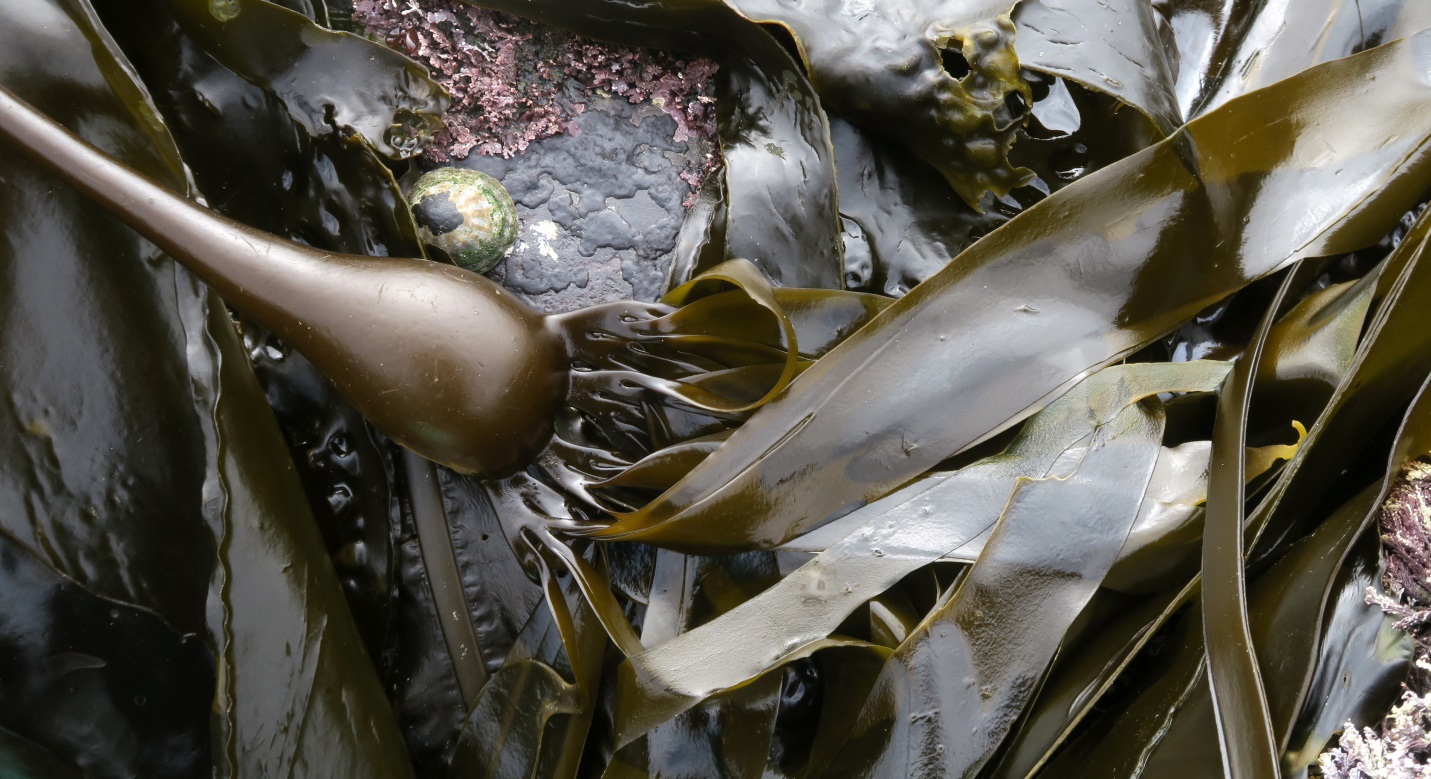
Figure 3: Close view of the Bull Kelp float which has as one of its buoyancy gases carbon monoxide – this mechanism effectively holds the numerous long blades close to the ocean surface where they rapidly grow and produce energy for the alga during the long daylight hours of the growing season. Fishboat Bay, Strait of Juan de Fuca, B.C., Canada. July 6, 2020. Photo ID 27308 ©Seaweedwhisperings.com
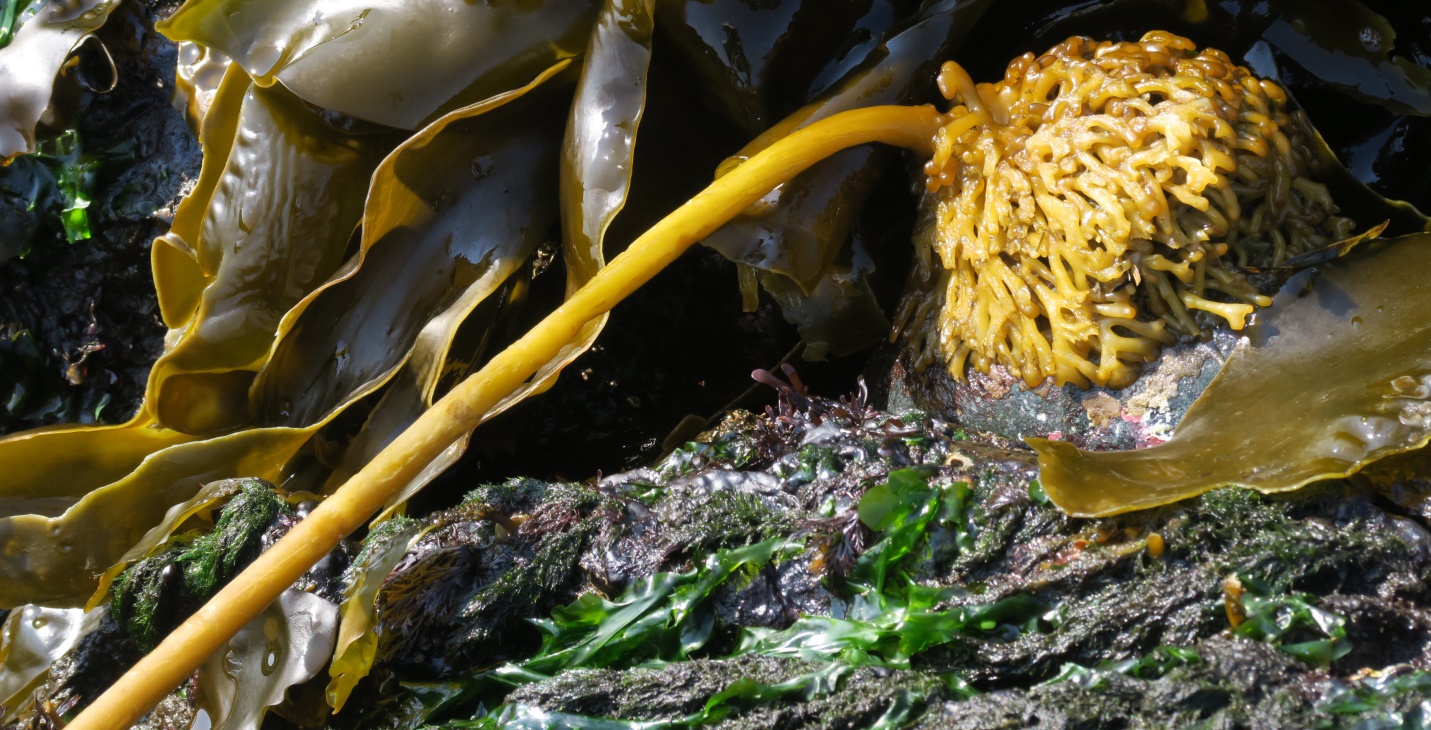
Figure 4: Holdfast detail; Harling Point, Juan de Fuca Strait, B.C., Canada. July 9, 2021. Photo ID 27309 ©Seaweedwhisperings.com
Discussion:
Measurements…, Person 1 wrote so many measurements in his field observations with this seaweed; he has not done that before, not nearly to this extent. It made us laugh to consider why he was moved to do this with Nereocystis luetkeana. This kelp is very fast growing and in prime growing season blades can increase their length by 15 to 17 centimetres in one day. It seems that some aspect of the energy of this seaweed is very much associated with the importance of size, size, SIZE!
The day we chose to interact with this species happened to be at a time when it had been damaged by a recent and extreme heat dome event. We noted other damage, bite marks, on the haptera of the holdfast as well. So, the concept of incurring damage seemed one that is also a strongly associated with Bull Kelp. This iconic kelp, the only member of its genus, seems to “do life” quite a bit differently than other kelp, some of whom grow side by side with Nereocystis. It seems that for Bull Kelp there is this enthusiastic and profusely manifested physical existence which is accomplished by impressively speedy growth of blades at the surface of the ocean; this is paired with the requirement to have a suitable connecting stipe and a sturdy holdfast to anchor the alga to the ocean floor. There is vulnerability here, as the haptera of this kelp are a tasty food to green sea urchins. Should the urchins take too many bites, then the whole kelp with all its many meters of photosynthesizing blades at the ocean surface will be vulnerable to being torn away from its ideal habitat. If moved too far away, the Bull Kelp may not perish itself, but it will not be able to ‘drop’ its reproductive sori in the right location (ocean depth and high current areas); so the next generation is at risk. But it was the same with the extreme sun damage we also observed during this Whispering, the prospect of being damaged or even mortally wounded doesn’t seem to give pause to Bull Kelp’s energy at all. It’s as if there is no defence, just a strong and simple and enthusiastic drive to grow.
A day or two later, I went to do some photography at the same shore line. The Bull Kelp beds caught my eye, off in the distance. I took a long hike, thinking I’d get a closer view of some of the groupings, but no matter which rocky point I accessed the Bullwhip Kelp were just that similar distance away. Getting truly close to them was not actually possible, unless I joined them in their element and went for a swim or a paddle. This is not such a surprise, but what I found interesting was the feeling that maybe I could…, possibly I might…, if I just went a bit further…
I think this feeling was both naïve and hopeful and endlessly motivating – an interesting blend. Possibly it is what drives the impressive growth rate of this species, too.
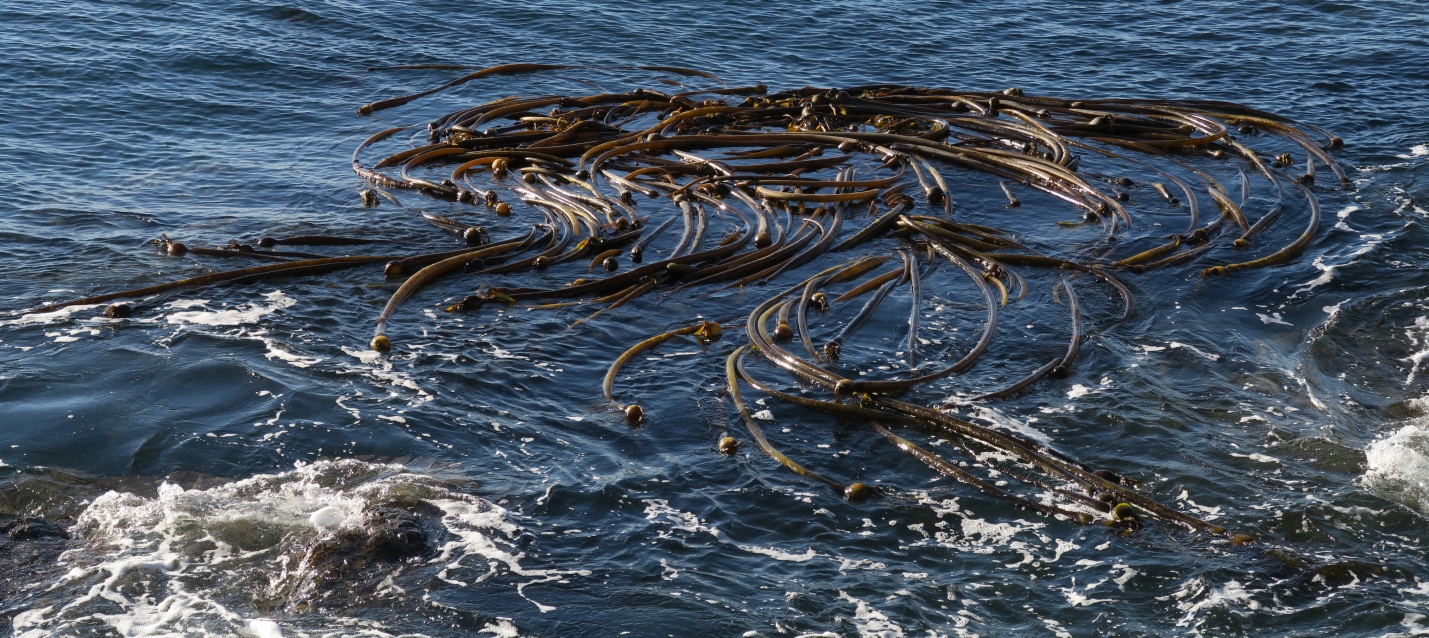
Figure 5: Nereocystis luetkeana group afloat off Macaulay Point, Juan de Fuca Strait, B.C., Canada. November 28, 2020. Photo ID 27310 ©Seaweedwhisperings.com
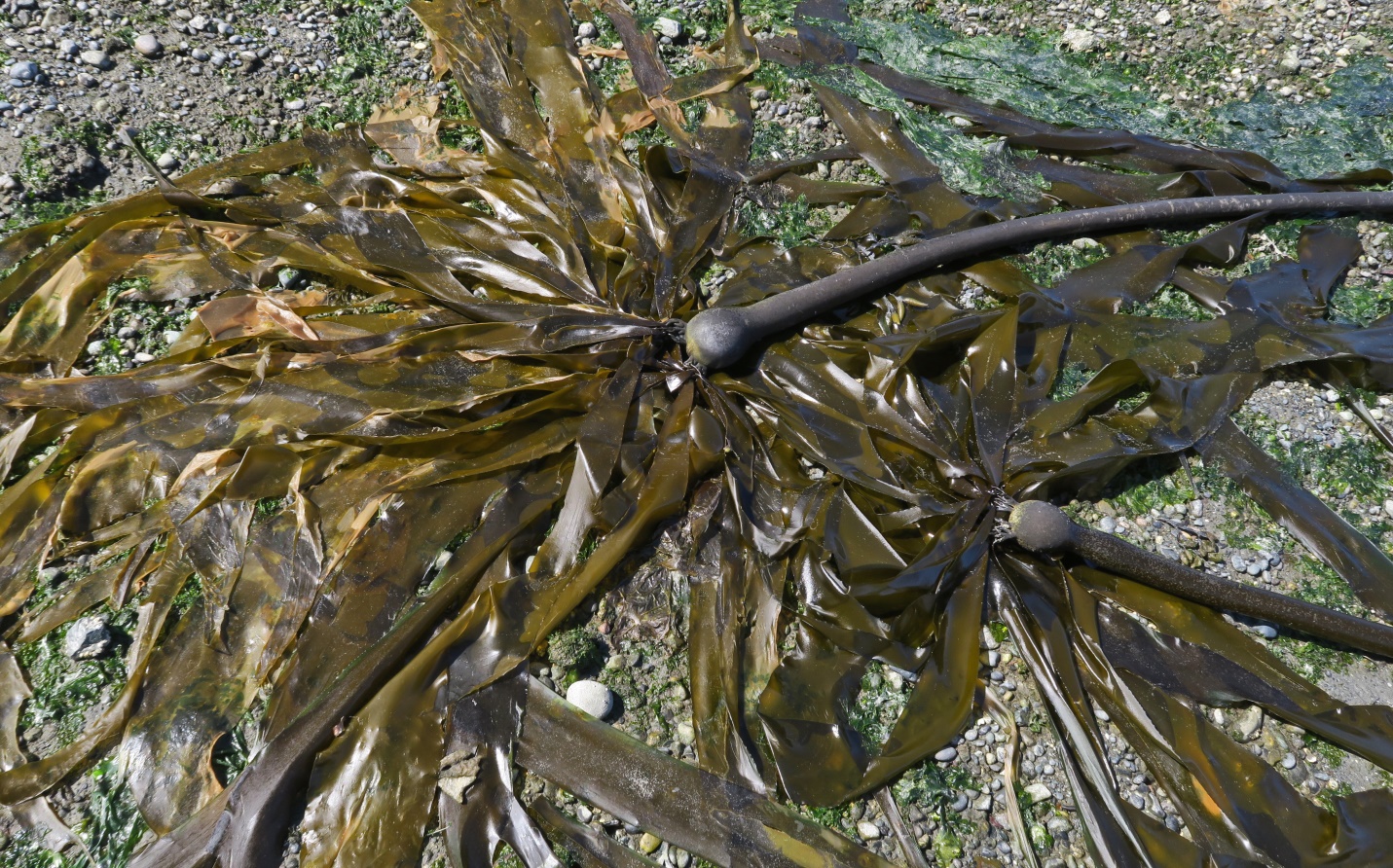
Figure 6: Washed ashore and splayed out on the beach, the numerous blades of Bullwhip Kelp radiate from their pneumatocysts. Gonzales Bay, Juan de Fuca Strait, B.C., Canada. July 11, 2021. Photo ID 27311 ©Seaweedwhisperings.com
Biology & Natural History Information:
Description:
Nereocystis luetkeana consists of a single long, narrow, cylindrical and whip-like stipe , from 10 to 36 meters long which is attached to the ocean floor by a richly-branched holdfast (consisting of finger-like projections called haptera). As the stipe grows further in length and matures it gradually increases in diameter, becomes hollow, and terminates above at the ocean surface in a single gas-filled pneumatocyst (spherical bulb-shaped float); this float can be up to 15 cm wide). From the top of the pneumatocyst two clusters of blades arise. Each cluster may consist of up to 50 blades; the blades commonly grow to 4 meters in length (but up to 10 m in good conditions) and are narrow (usually less than 20 cm) in width. This species of kelp is fast growing and can grow at relative high densities. As such it is canopy forming; it provides important habitat for other species of seaweeds and marine animals.
Habitat:
This annual kelp (brown alga) grows on rock from the low intertidal to subtidal. It prefers semi-exposed areas or high current areas. Offshore beds can persist for one to many years. Young Bull Kelp individuals may establish intertidally but do not thrive there; this is a species that likes to be anchored in nearshore waters well down in the subtidal.
North Pacific Distribution:
Bull Kelp grows on the coastlines from the Eastern Aleutian Islands, Alaska, all the way down the coast of British Columbia and extending through to San Luis Obispo County, California.
Remarks:
Several features make this species of kelp unique. This is an annual seaweed and Bull Kelp individuals achieve significant growth in a single season (March through September); blade growth can reach 15 to 17 centimeters in a single day. Nereocystis luetkeana is the only kelp species to release spore patches. This mechanism seems to have developed to serve the need for critical concentrations of spores to ‘land’ very near where the parent plant has successfully grown. Spore patches called sori develop on the mature blades and beginning in late summer drop from the ocean surface, floating several meters down to the ocean bottom, to reoccupy the optimal substrate of the parent. In this manner, Bull Kelp ‘beds’ may persist for years in much the same location. The float of a single Bull Kelp may achieve a volume of up to 3 liters and one of its buoyancy gases is carbon monoxide. The genus name, Nereocystis is derived from the Greek, meaning mermaid’s bladder. Indeed the floats have been utilized as storage containers by coastal First Peoples; they were useful to hold water and eulachon oil. Bull Kelp itself is edible and is harvested for human consumption both fresh and dried. It also makes a good fertilizer and is collected by gardeners when it washes ashore to amend soil.
Even when the annual kelp forest dies off in the winter this species serves a useful role; the floating kelp masses are still important food and habitat for many marine species.
Classification:
Phylum: Ochrophyta
Class: Phaeophyceae
Order: Laminariales
Family: Laminariaceae
Genus: Nereocystis
Species: Nereocystis luetkeana (K.Mertens) Postels & Ruprecht 1840
![]()